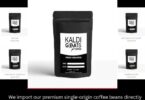
What is EPOC?
EPOC : excess post-exercise oxygen consumption Ever heard a fitness pro say, “This 30-minute workout will leave you burning more calories for the rest of the day!?” Does this sound too good to be true?
The concept this fitness professional is getting at is excess post-exercise oxygen consumption (EPOC), also sometimes referred to as the exercise “afterburn.” It has been described as a major player in weight management and weight loss, as well as a benefit of high-intensity exercise.
What is this EPOC effect? Does it turn us into calorie-scorching machines? If so, how can we optimize our training to get the most benefit?
What is EPOC?
EPOC is the amount of oxygen our body consumes following an exercise session that is above and beyond the pre-exercise oxygen consumption baseline. Our body uses more oxygen after exercise than before exercise, so we burn more calories during our recovery from exercise than we do before exercise.
Why do we get an EPOC effect?
After exercise, our body has to return to its resting state, or homeostasis. Energy is used in this recovery process, which is why we experience an increase in caloric expenditure after exercise compared to before exercise. Reynolds & Kravitz (2001) state that the following occur during EPOC: decrease in body temperature, replenishment of energy resources, re-oxygenation of blood and restoration of circulatory hormones, and return to normal heart rate and breathing rate.
How long does EPOC last?
While it has been stated that the body can take 15 minutes to 48 hours to fully recover from exercise (Vella & Kravitz, 2004), research does not agree on a specific time frame. The majority of studies we reviewed measured oxygen consumption within 24 hours after exercise. Previous research indicates that oxygen consumption (and caloric expenditure) may be elevated up to 24 hours post-exercise.
How many extra calories do we burn from EPOC?
Research offers mixed results on the effect of EPOC after one bout of exercise because many factors contribute to this elevated caloric expenditure (i.e. intensity & duration of exercise, mode of exercise, exerciser fitness level, exerciser gender, etc.). Additionally, variations in research designs make it challenging to come to a consensus. Most research we reviewed shows an EPOC effect of 50 – 200 calories after interval training and resistance training. It may be worth it to note that even more calories are expended during the actual exercise session.
This article by the American Council on Exercise and this article by the National Strength and Conditioning Association also offer details on EPOC.
While it has been stated that the body can take 15 minutes to 48 hours to fully recover from exercise, research does not agree on a specific time frame.
How is EPOC affected by exercise?
The greatest EPOC response is elicited by high-intensity and/or longer duration cardiorespiratory and resistance exercise. In general, the higher the intensity of exercise (and the further we get from homeostasis), the greater the duration and magnitude of EPOC after exercise. An effort-tracking device like a MYZONE® heart rate monitor makes it simple to track the intensity of our workouts.
Several forms of exercise have been recommended for maximizing EPOC effects. Vella & Kravitz (2004) named several, including:
- Interval Training
Tempo Training
Circuit Resistance Training
Heavy Resistance Training
While longer exercise sessions have been show to yield a greater EPOC response compared to shorter sessions, exercise intensity is likely the main contributor to EPOC.
What are the key takeaways?
Here are the key points we hope you take away regarding EPOC:
Seems to have a modest impact on total caloric expenditure.
High-intensity cardiorespiratory exercise, circuit resistance training, and heavy resistance training tend to have the greatest effect .
The types of exercise that elicit a higher EPOC effect (intervals, circuits, and heavy resistance training) have many other health and fitness benefits. They are important to include in training programs, if and when appropriate.
Although we might not expend a large number of calories following one exercise session, more calories burned due to may add up and contribute to our weight management goals over time. For example, if we performed three workouts a week that had an average effect of 50 calories per workout, we would expend an extra 150 calories, plus what we burned in the actual workouts!
We hope you found this information about valuable!
By Emily Sopo, Special AFS Contributor






